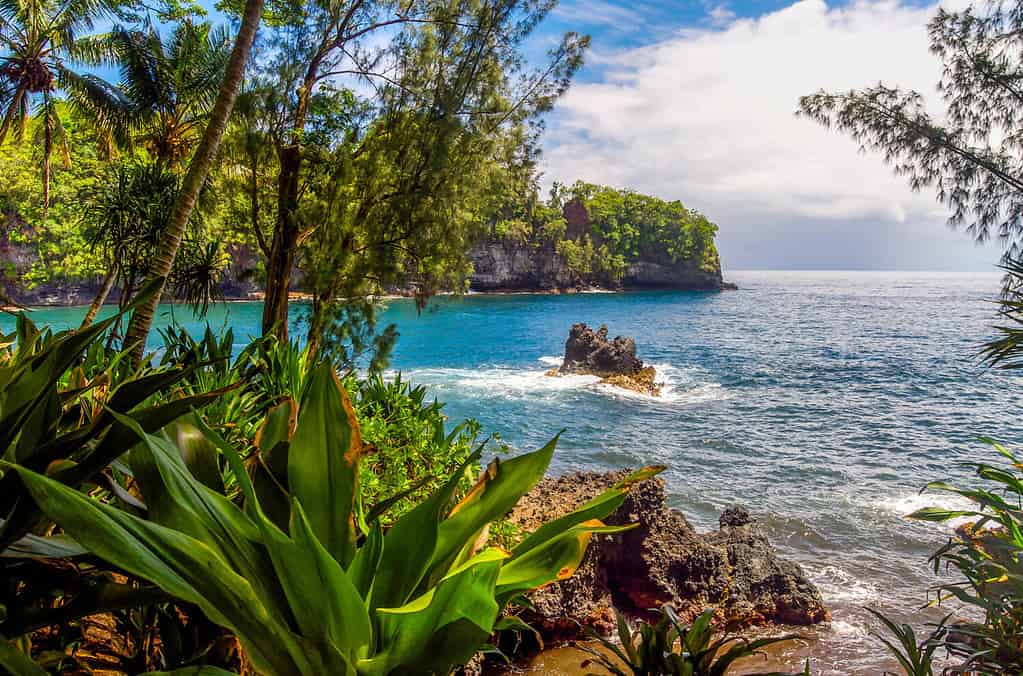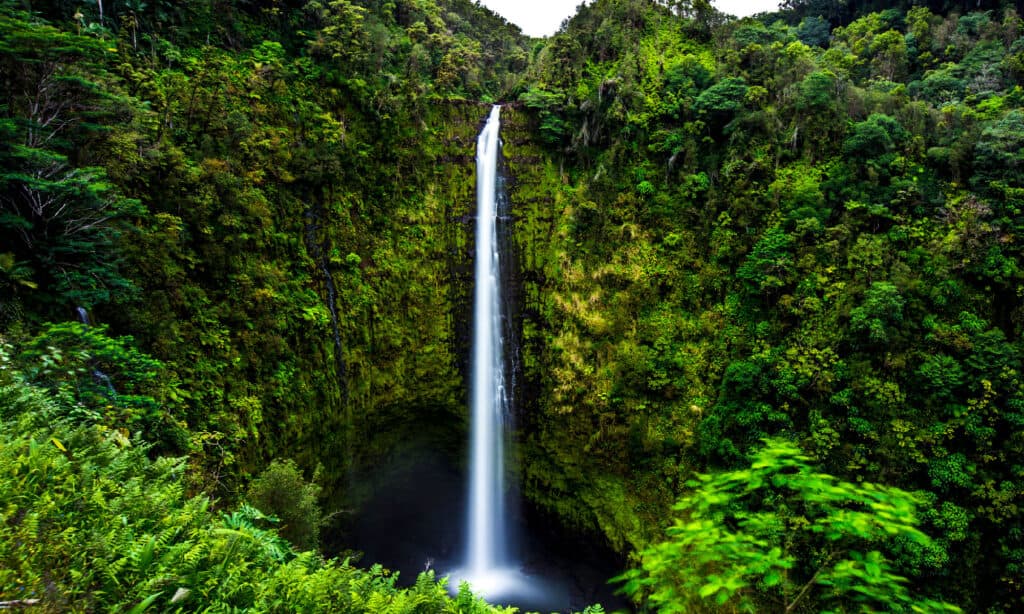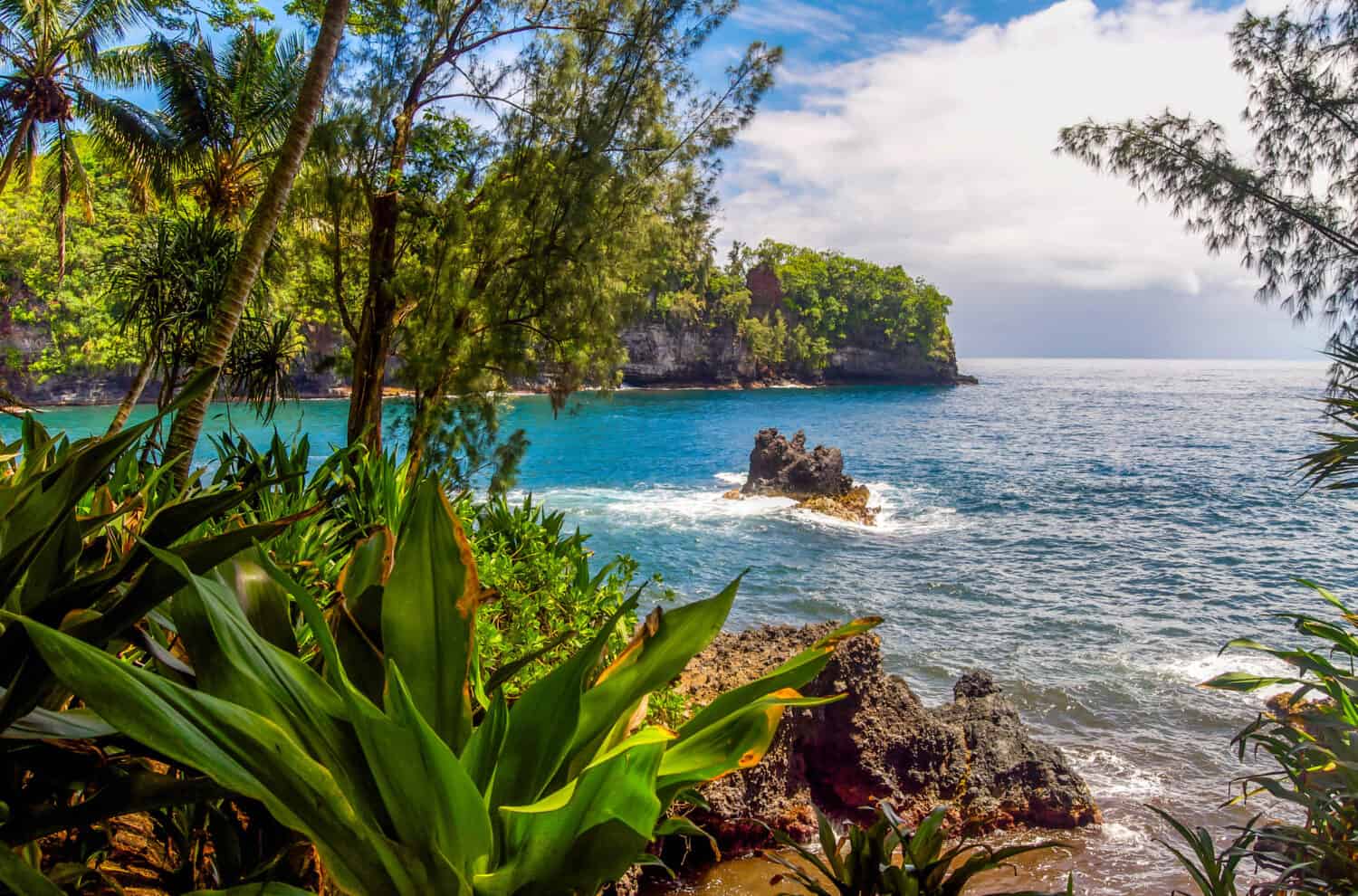The Hawaiian Islands are known for their stunning natural beauty and inextricable connection to Hawaiian culture. Every island is unique and is home to hundreds of native plants and animals. The land has been inhabited for thousands of years. Still, official records of the state of Hawaii didn’t start until the early 1900s after it was colonized by Americans and Europeans looking to expand trade opportunities. Keep reading to discover the oldest town in Hawaii and get a glimpse of its long history and the animals that call it home.
What Is the Oldest Town in Hawaii?
The city of Hilo dates back to 1903, making it the oldest town in Hawaii. However, oral Hawaiian history lets us know that people have lived in the areas along the Wailoa and Wailuku rivers for centuries. In fact, stories and archaeological records trace back to the first Polynesians who arrived in 1100 AD. Today it’s the biggest city and the capital of the Big Island, with a population of more than 40,000.

According to state records, Hilo is the oldest town in Hawaii.
©MH Anderson Photography/Shutterstock.com
The History of Hilo
Hilo runs up the Big Island’s eastern coast, divided into the District of North Hilo and the District of South Hilo. The town overlooks Hilo Bay with views of the active volcano Mauna Loa and the dormant volcano Mauna Kea.
Hilo was a fishing and farming community that evolved into a commercial center for the sugar industry. However, the first settlers of Hawaii brought sugarcane to the island centuries earlier. It was cultivated for food and medicine, becoming a significant export crop when Christian missionaries colonized the islands after 1822. The missionaries also brought whaling and trade ships, creating an export hub throughout the town and other Hawaiian Islands.
The Hilo Sugar Mill became the city’s primary source of revenue and attracted overseas laborers from Japan, China, Portugal, and other countries. However, Chinese immigrants were the first to start refining sugar. They worked long days on the plantations and were bound to contracts of at least three years.
Tourists started arriving in the oldest town in Hawaii in the late 19th century. They came to see the active volcanoes, dramatically increasing after 1967 when air links to the mainland were constructed. By then, the sugarcane industry declined, making tourism and other exports, including orchids, papaya, and macadamia nuts, a priority.
What is now downtown Hilo was built around the crescent-shaped bay and is sprawling with museums, art galleries, and more. It’s considered the island’s cultural capital because of the popular museums and natural historic sites.

Wildlife You’ll Find in Hilo

The NeNe, or Hawaiian goose, is the official Hawaiian state bird.
©Wunson/Shutterstock.com
The lush rainforests of Hilo and the surrounding Pacific Ocean are full of unique wildlife special to Hawaii. Many of these animals represent the beauty of the Hawaiian Islands and are a testament to conservation. Below are a few animals you can spot in the oldest town in Hawaii.
NeNe (Branta sandvicensis)
The NeNe, also called the Hawaiian goose, is the official Hawaiian state bird. It has a black head, a black and white striped neck, and brown and white feathers. This beautiful bird most likely evolved from the Canadian goose but lives exclusively on several Hawaiian Islands.
Hawaiian Monk Seal (Neomonachus schauinslandi))
The Hawaiian monk seal is one of two official state mammals. Its name means “dog that runs in rough water.” They are, unfortunately, critically endangered and should be left alone by humans. They are also rare, so you are lucky if you spot one while diving or swimming along the Hilo coast.
Humpback Whale (Megaptera novaeangliae)
The humpback whale is the official state aquatic animal as well as the official state animal. They can be seen from all of the islands when they travel to the warm, shallow waters to mate and raise their young. The humpback whale is sacred and a powerful protector of the Hawaiian Islands.
Humuhumunukunukuāpuaʻa (Rhinecanthus rectangulus)
The Humuhumunukunukuāpuaʻa, also called the reef triggerfish or rectangular triggerfish, is the official Hawaiian state fish. The fish has distinct black markings down its side, yellow along its top fins, and light blue lips. Its name translates to “triggerfish with a snout like a pig” and is the longest Hawaiian word. They are territorial and known to bite snorkelers.
Things to Do in Hilo

ʻAkaka Falls is a 442-foot waterfall and a popular sight in the ʻAkaka Falls State Park.
©iStock.com/Janice Wei
The oldest town in Hawaii is naturally beautiful. As a result, there are many things to do around the island, surrounded by stunning sights and sounds.
ʻAkaka Falls State Park
One of the most popular places to visit in Hilo is the ʻAkaka Falls State Park. The trails lead along the northeastern Hilo coast to the 442-foot ʻAkaka Falls and the 100-foot Kahūnā Falls. You can find the park at the end of ʻAkaka Falls Road on Highway 220, 3.6 miles southwest of Honomū . Although the hike is short, it’s also pleasant. Hikers move uphill for 0.4 miles through a lush rainforest of bamboo groves and wild orchids. Follow the path and take in one of the island’s most famous stream-eroded gorges.
Liliʻuokalani Gardens
Take a stroll through the peaceful Liliʻuokalani Gardens on Banyan Drive along Hilo Bay. The garden is named after the last reigning monarch of Hawaii, Queen Liliʻuokalani, and is dedicated to the island’s first Japanese immigrants who worked in the sugar cane fields. The authentic and beautifully landscaped 24.7-acre Japanese garden has fishponds, pagodas, rock gardens, and a teahouse. Visitors also get a view of Hilo Bay and Moku Ola, also known as Coconut Island, while exploring the gardens.
Lyman Museum
The Smithsonian-affiliated Lyman Museum gives visitors a glimpse into the history of the oldest town in Hawaii and the other Hawaiian Islands. In historic downtown Hilo, the museum’s exhibit covers local volcanoes, flora, and fauna, including gem and mineral displays. The museum was built in 1971 and continues to educate visitors about Hawaii and Hawaiian culture through self-guided tours among the archives. The Lyman Museum is one of Hawaii’s oldest standing wooden structures and is included on the State and National Registers of Historic Places.
Kaumana Caves Park
The Kaumana Caves Park is right outside Hilo on Kaumana Drive and is part of a 25-mile lava tube formed from the lava of Mauna Loa in 1881. Visitors in Hilo looking for a more adventurous activity can explore a unique array of lava formations in the Kaumana Cave. You can explore up to 2 miles of the cave until you reach private property. Exploring the Kaumana Cave is an interactive way to learn about the volcanic impact on the land.
Thank you for reading! Have some feedback for us? Contact the AZ Animals editorial team.








